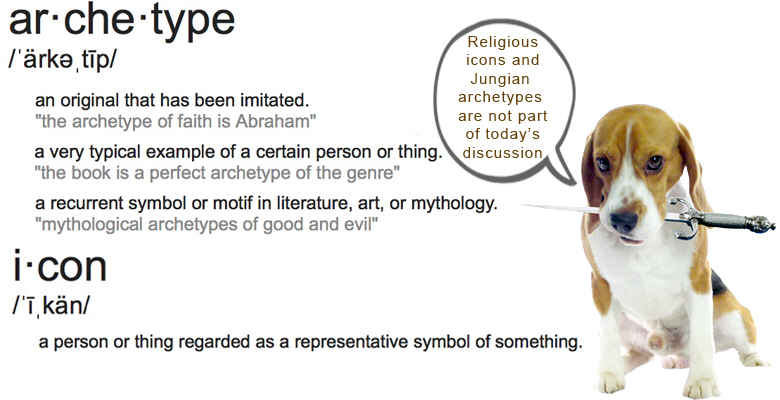 Do you have favorite books and movies?
Do you have favorite books and movies?
Are there songs you love and stories that captivate you?
Is there art that speaks to your heart?
Paintings and plays, movies and music, stories and sculptures: art is valuable to the degree that it triggers emotion. But it isn’t always the art, itself, that triggers the emotion. Sometimes the art is merely a point-of-contact with an idea – or an ideal – with which we identify.
We’re attracted to art when it
stands for something we believe in,
shows us a reflection of our own values,
gives us a glimpse of our own inner face.
An icon symbolizes a thought or a feeling for which we do not have sufficient words.
But when the symbolism of an icon becomes too obvious, we call it a cliché.
We are attracted to mysterious icons.
We are repelled by predictable clichés.
“Mr. LeSage, sir, I’ve got a tender new script about a sensitive young subway guard that just stinks of courage and integrity. And I know, sir, that next to scripts that are Tender and Poignant, you love scripts that have Courage and Integrity. This one, sir, as I say, stinks of both. It’s full of melting-pot types. It’s sentimental. It’s violent in the right places. And just when the sensitive young subway guard’s problems are getting the best of him, destroying his faith in Mankind and the Little People, his nine-year-old niece comes home from school and gives him some nice, pat chauvinistic philosophy handed down to us through posterity and P.S. 564 all the way from Andrew Jackson’s backwoods wife. It can’t miss, sir! It’s down-to-earth, it’s simple, it’s untrue, and it’s familiar enough and trivial enough to be understood and loved by our greedy, nervous, illiterate sponsors.”
– J. D. Salinger, from “Zooey,” published in The New Yorker in 1957
According to W. H. Auden, “Great art is clear thinking about mixed feelings.”
And according to Rob Kapilow, sappy clichés are “clear thinking about clear feelings.”
I share this with you today in the hope that you will be able to use the richness of archetypes and icons in your advertising without falling into the molasses of sappy cliché.
When a person spends money, they tell you everything about themselves that matters.
Our purchases remind us – and announce to the world around us – who we are. Our favorite brands communicate what we stand for, what we believe in. We direct our dollars in ways that reflect our values and offer a glimpse of our souls.
Great ads create a lasting bond with customers through the artful use of archetype and icon.
What? You’re convinced people just want the facts? The unadorned truth?
It’s 1991. We see workers in a car factory as we hear the voice of Brian Keith,
“A car is a car. It won’t make you handsome or prettier or younger. And if it improves your standing with the neighbors, then you live among snobs. A car is steel, electronics, rubber, plastic and glass. A machine. And in the end, may the best machine win… Subaru. What to drive.”
In 1992, we see the next ad in that series:
“Making a sports car, it seems mandatory to mention how fast it can go. Instead, why not mention the things you shouldn’t mention about a sports car: a strong weld, over 24 safety features, all-wheel drive, engineering that endures. Still, if it’s speed you want, we promise, with the Subaru SVX you’ll easily be able to go as fast as the law allows… Subaru. What to drive.”
And then the campaign evolved into open mockery of people who identify with the cars they drive.
Shot from a low angle, we look upward at a man who looks down on us. He says,
MAN 1: A luxury car says a lot about its owner.
WOMAN 1: Mine says I’m witty beyond belief.
MAN 2: Mine says I’m more Europeanish.
MAN 3: Mine says I’m the product of superior genes.
WOMAN 2: I’m so successful I can go into debt.
MAN 4: I’m much more handsome
MAN 5: cosmopolitan
WOMAN 3: another pathetic sheep following the herd
MAN 6: I’m irresistible
WOMAN 4: powerful
MAN 7: stylish
MAN 8: sexy
WOMAN 3: dynamic.
NARRATOR: The Subaru SVX. All it says it that you bought a great car and you can still pay your mortgage.
Although those “outside-the-box” ads won numerous awards, the financial result was disastrous.
The ad agency was fired and the Subaru executives who approved those ads lost their jobs.
In summary:
1. We buy things with which we identify.
2. Predictability is the essence of cliché.
3. Cold logic fails to warm the heart.
4. Win the heart with the skillful use of icons, and
5. your customer will create their own logic to justify what their heart has already decided.
Win the heart.
Roy H. Williams
 Made with hand-tossed dough and fresh ingredients, then baked in a real brick oven and served in just 4 minutes, a pizza made by Drew French is as real as they get. But in a nation already crawling with pizza places, will this be enough? Evidently so, because that was 10 years ago. Today, Drew French has 58 “Your Pie” locations in 19 states with 60 additional locations in development. And he only recently turned 35 years old. Welcome to America! …and MondayMorningRadio.com
Made with hand-tossed dough and fresh ingredients, then baked in a real brick oven and served in just 4 minutes, a pizza made by Drew French is as real as they get. But in a nation already crawling with pizza places, will this be enough? Evidently so, because that was 10 years ago. Today, Drew French has 58 “Your Pie” locations in 19 states with 60 additional locations in development. And he only recently turned 35 years old. Welcome to America! …and MondayMorningRadio.com